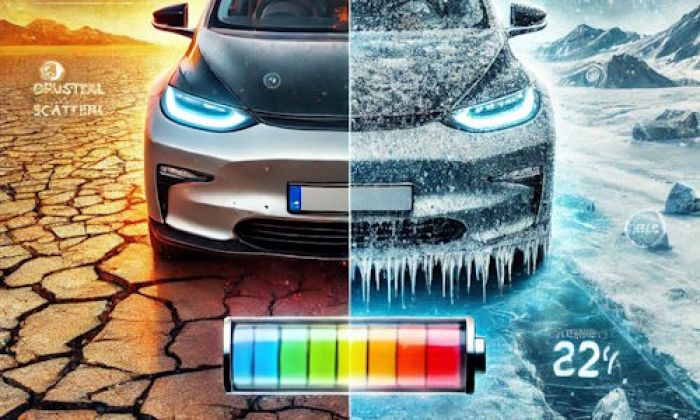Having your car stop or slow down unexpectedly, especially in the middle of a highway, can be a nightmare. The "Smart Brake System Malfunction" coupled with other warning messages may also pop up on your Mazda CX-9 dashboard, leaving you to wonder what the issue could be.
SCBS malfunction message highlights
- Common reasons:PCM issues, vacuum pump problems, oil pump early issues
- How to fix:no DIY fixes for this other than disconnecting the battery and resetting the error codes
- Possible consequences:a lot of bad things may happen if ignored
- Priority level:High
- Can you drive?Carefully
- DIY repair:Impossible
- Repair price range:$250-$900

How Does the Mazda Smart Brake Support Technology Operate?
Smart brake support(SBS) is a safety pre-crash feature in Mazda car models. It's one of the safety features in Mazda's i-ACTIVSENSE safety package. The system has both automatic emergency braking and forward collision warning features that work to prevent or reduce the impact of collisions.
In the event of a possible collision, a warning sound and an indicator alert can come on in the dashboard. The automatic emergency braking is also activated whenever the driver doesn't respond by stepping on the brakes to stop the vehicle before a collision happens.
The SBS technology can prevent collision with the help of a radar sensor located behind the front grille of the Mazda and a forward-sensing camera positioned near the rearview mirror. The radar sensor detects a vehicle or an obstruction (pedestrian, bicycle, or object) ahead using radio waves that reflect off the obstruction.
The system works whenever the relative speed of your Mazda and the vehicle ahead is 10mph or faster.
Another safety feature in the i-ACTIVSENSE safety package that works hand in hand with the SBS feature is the Smart city brake support(SCBS). It has a similar function to the SBS technology with its forward collision warning and automatic emergency braking.
The difference is that SCBS operates through a laser sensor located at the top and behind the windscreen. It also operates at lower speeds compared to the SBS system. The 2020 Mazda CX-9 has an added feature that can detect pedestrians at night.
What Happens When the Smart Brake Support System Malfunctions?
Whenever the SBS system malfunctions-due to various reasons that we'll cover below-the system is wrongly activated, prompting the vehicle to slow down or even come to a sudden halt. This happens when there's no possibility of a collision ahead.
The brake lights may also turn dim and prevent drivers of oncoming vehicles not to notice your car slowing down. Some Mazda owners also report the inability to accelerate or maintain the car's speed. The braking defect exposes the vehicle to rear-end collisions and other accidents, which can result in fatal injuries or even death. This was a common problem in Mazda car models such as Mazda 3, Mazda 6, CX-3, CX-5, CX-9, and MX-5, resulting in a mass class action in 2018.
The issue mostly crops up under hot and humid conditions, indicating a design flaw in the system.
Whenever the SBS system malfunctions, warning messages such as "Smart City Brake Support Malfunction" and "Front Camera Sensor System Malfunction" may appear on the dashboard in conjunction with the "Smart Brake System Malfunction" message.
It's not advisable to drive your Mazda when one or all the warning messages appear, especially on highways. This is because of a potential accident, so it's better to be safe than sorry.
What are the Causes of the Malfunctioning of the Smart Brake System in the Mazda CX-9?
The "Smart Brake System Malfunction" warning message can be displayed on your Mazda CX-9 for various reasons. Below are some common ones:
1) A Fault in the Forward Sensing Camera
The Mazda's Technical Service Bulletin released in 2018 highlighted that the forward sensing camera was a cause of SBS malfunctioning. The front camera sensor can overheat and trigger the SBS and SCBS system when exposed to high temperatures or sunlight.
This activates the collision warning alerts or the automatic emergency braking, causing the car to stop or slow down without the risk of a collision ahead. In the bulletin, Mazda claims the issue is caused by the forward sensing camera's poor heat radiation performance. When the front sensing camera malfunctions, it cannot effectively utilize radio waves to detect cars, pedestrians, or bicycles ahead.
The malfunction causes the illumination of warning lights with messages such as "Front Camera System Malfunction" and "Smart Brake System Malfunction."
2) Blockage or a Fault in the Front Radar Sensor
Dirt, debris, or other obstructions can block the front radar sensor and prevent it from performing its function appropriately. Dirt or fog on the inside or outside of the windscreen can also prevent the laser that facilitates the smart city brake system from functioning properly.
The blockage due to the buildup of dirt on the sensors prevents the detection of obstructions ahead. Loose and faulty wires, fuses, or connectors in the front radar sensor can also cause the front radar sensor to malfunction.
3) A Low Voltage Battery
Another cause of the smart brake support system malfunction is a low-voltage battery. For the front radar system to operate optimally, it needs 12 volts. A voltage below that is insufficient and prevents the system from functioning properly. This results in the warning messages "Smart Brake System Malfunction" and "Smart City Brake Malfunction" appearing on the instrument cluster of your Mazda CX-9.
4) A Faulty ECU
The engine control unit(ECU) receives information from the radar sensor and the forward sensing camera about the type of obstruction and the distance of the obstruction ahead. It then acts accordingly by activating the smart brake support or smart city brake systems when appropriate.
If the ECU is faulty and cannot respond effectively, the warning message "Smart Brake System Malfunction" appears. It may also be coupled with other warning messages, such as the "Smart City Brake System Malfunction".
5) Leakage or Contamination of Brake Fluid
Leakage in the brake fluid results in a loss of hydraulic fluid pressure. This can make the brake pedal feel soft and spongy or drop close to the floor. A leak commonly occurs when a line meets another component, like the cylinder in drum brakes, the ABS pump, calipers at each wheel, the master cylinder, or the brake proportioning valve.
The hard metal brake lines located under the car are prone to corrosion in areas with road salt leading to leakage of the brake fluid. If the ECU detects the brake fluid is below threshold, it triggers the "Brake System Malfunction" warning message to pop up. It also turns off the smart brake support and smart city brake systems.
Air, moisture, or debris may contaminate the brake fluid, damaging various brake system components.
6) A Worn-out Master Cylinder
A damaged master cylinder can also be a reason for failure in your brake system. If the master cylinder becomes faulty, the hydraulic pressure will not be distributed effectively from the brake pedal to the car tires. One symptom of a bad master cylinder is that the brake pedal might feel mushy or drop low.
The brake warning light can also illuminate your dashboard. A fault in the braking system also affects the smart brake support and smart city brake support systems making them not respond successfully to the risk of collision. This can then result in an accident.
7) A Faulty ABS pump
The ABS pump is part of the antilock braking system (ABS), a safety feature that prevents the locking of brakes in heavy braking situations. It comes in handy on bad weather roads such as muddy terrains or icy roads. The ABS pump works in harmony with the ABS sensors, which send information about the car wheels' speed when braking for the pump to either engage or disengage.
If the ABS fails, the car can lose traction and skid during the heavy braking situations described above. The ABS warning light accompanied by the "Brake System Malfunction" can also illuminate the instrument panel.
8) A Low Tire Pressure
In the event of a low tire pressure, two warning lights indicating "Low Tire Pressure" and "Smart Brake System Malfunction" can illuminate your Mazda CX-9. The low tire pressure can be a reason for the smart brake support safety feature to fail; hence the warning lights popping up. An issue with the steering wheel can also trigger the warning light to come on.
A shaking steering wheel usually characterizes this. Now that you know the causes, let's look at how to fix the smart brake system malfunction.
How to Fix the Smart Brake System Malfunction in Mazda CX-9
- One of the fixes recommended in the Mazda Technical Service Bulletin related to the common issue of malfunctioning the forward sensing camera is replacing it. During replacement, ensure you get an FSC with a thermal pad(a solution by Mazda to solve the poor heat performance of the FSC) added in it.
- You can also check behind the grille to check if the radar sensor is covered in dirt or has any signs of blockages. Clean it to regain its normal function. You can also replace the sensor if it's damaged.
- If the voltage of your Mazda CX-9 falls below 12 volts after checking with a voltmeter, charge the car battery for it to regain its normal voltage. If the car battery has over three years of use, your best option would be to replace it to avoid complications in the charging system.
- If the ECU has a problem with its software, switching to updated software can help solve the issue. If that doesn't work, you can flash or reset the ECU. Simply unplug the battery to perform a basic reset. If all those options fail, it probably means your ECU is damaged and needs replacement.
- To solve the problem of contaminated or insufficient brake fluid due to leakage, bleed the brake system and add fresh and clean brake fluid. You also need to inspect if the contaminated brake fluid has caused damage to parts in the brake system and replace them.
- Inspect the master cylinder for any signs of leakage due to damage to the master cylinder seals. You can repair this, but if the master cylinder is faulty, it needs replacing.
- You can also have your ABS checked for any signs of damage. This includes the ABS pump or the ABS sensor. If any of them is damaged, a replacement is in order.
- Check your car tires' pressure using a gauge to determine if that's the issue. If the tire pressure is below the recommended level, add air from the air compressor in short bursts until you reach the recommended level.
Bottom Line
There you go-what the "Smart Brake System Malfunction" means, its causes, and how to fix the issue.
About the authors
The CarAraC research team is composed of seasoned auto mechanics and automotive industry professionals, including individuals with advanced degrees and certifications in their field. Our team members boast prestigious credentials, reflecting their extensive knowledge and skills. These qualifications include: IMI: Institute of the Motor Industry, ASE-Certified Master Automobile Technicians; Coventry University, Graduate of MA in Automotive Journalism; Politecnico di Torino, Italy, MS Automotive Engineering; Ss. Cyril and Methodius University in Skopje, Mechanical University in Skopje; TOC Automotive College; DHA Suffa University, Department of Mechanical Engineering






Add comment